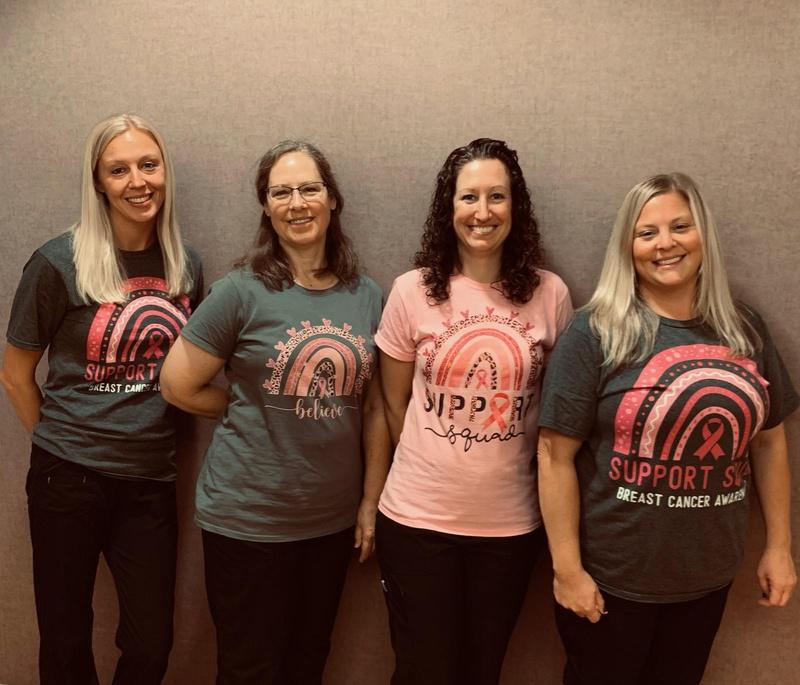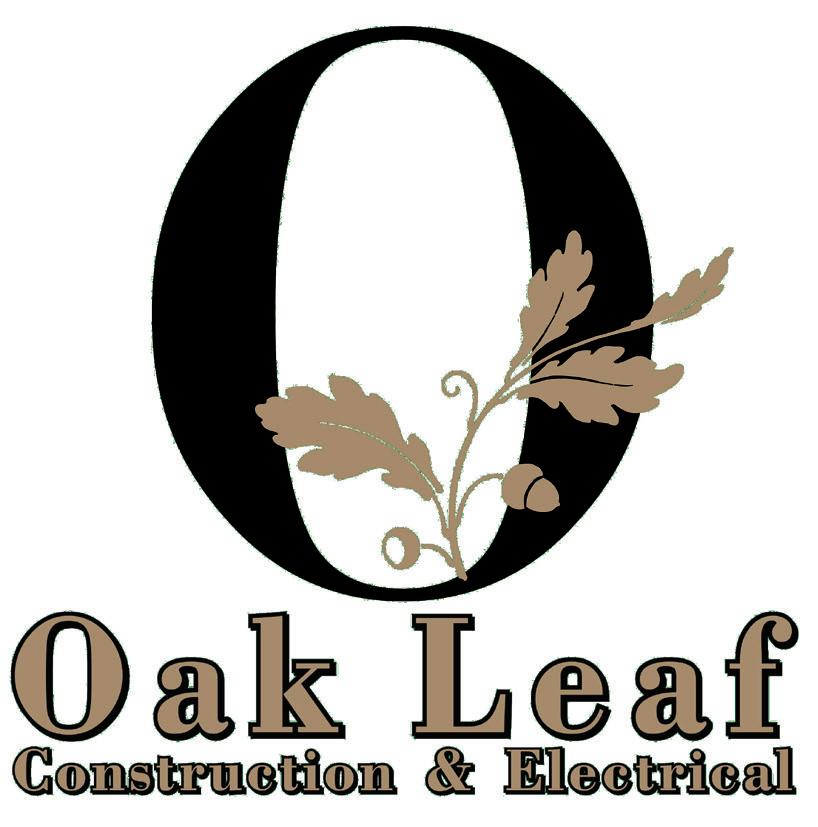

Business Women in







Factors to consider when vetting postpandemic career opportunities
The COVID-19 pandemic left no aspect of life as the world knew it before 2020 untouched. In the wake of the pandemic, students were forced to learn in new ways, individuals were forced to find new ways to maintain relationships with family and friends and employers and employees were forced to confront an emerging notion of the workplace.
Since the World Health Organization first declared a global pandemic in March 2020, much has been made of “The Great Resignation,” a term adopted in reference to the tens of millions of individuals who quit their jobs during the pandemic.
Further study is needed to determine just how many people quit their jobs since the pandemic began, but there’s no denying that attitudes toward work have shifted since that time. That shift has made many people more willing to change careers. Women pondering a career move can consider these factors as they vet new opportunities.
Hybrid working
A recent Gallup report on workplace trends found that 91 percent of workers in the United States working at least some remote hours each week are hoping the opportunity to do that continues permanently.
Perhaps surprisingly, more than half of the workers surveyed indicated they would ideally like to split their time between working at home and in the office. Women vetting new career opportunities can ask if hybrid working is a possibility.
Hybrid working is beneficial for various reasons, not the least of which is affording professionals a chance to get out of the house while still ensuring they can spend more time with family, which is an especially enticing benefit for working parents.
Salary
It goes without saying that salary bears significant consideration when vetting a new employment opportunity. In the past, professionals might have jumped at the chance to earn higher salaries, even if it meant leaving their current employer behind. However, many professionals experienced a priority shift during the pandemic, recognizing the value of spending less time working and more time away from the office. Some spent that extra time with family and friends, while others used it to explore new passions. When vetting a new career opportunity with a higher salary, women can do their best to determine what that higher salary will require.
If it will require more time working and less time with family, friends and hobbies, then women must ask themselves if the extra money is worth the decrease in personal time.
Stability
Stability is another issue that might not have garnered as much consideration before the pandemic as it figures to in a post-pandemic world. Many professionals lost their jobs, took pay cuts or were furloughed during the pandemic.
Such individuals might have worked in industries like travel or events that are vulnerable when shutdowns are issued. Women who have been through the professional wringer during the pandemic should consider the stability of a given employer before accepting a job offer.
Some may find the rewards of working in a field they’re passionate about are worth the risk, while others may prefer a line of work that offers more stability and security.
The pandemic has changed many aspects of professional life, including how new career opportunities should be vetted.


Gambino Realtor Pam Cunningham
Rockford resident Pamela Cunningham is a real estate agent with Gambino Realty. She has over 20 years of sales and marketing experience and a Bachelor’s degree in sales and marketing. She’s received numerous awards including the American Marketing Association. Pam specializes in residential real estate in Winnebago, Boone, Ogle, McHenry, and Stephenson counties including previously owned homes, new construction, horse properties, land and lots. She can be reached 815-289-6323 or PCunningham@ GoGambino.com.
Meet Melissa Johnson and Melissa Beatty: Two remarkable women leading the way in business
In a world where dedication and expertise pave the path to success, these two dynamic professionals bring a wealth of knowledge and passion to their roles as Treasury Management Specialist and Commercial Banker, standing out as shining examples of excellence in the banking industry.
As women make strides in boardrooms around the globe, these Melissa’s shine as prime examples right here at our German American State Bank.
Melissa Johnson isn’t just a seasoned professional but also a driving force within her community. Sitting on four boards, she symbolizes leadership and commitment.
Melissa Beatty matches that drive with an impressive 25 years in banking and holds seats on two different boards, one of which notably supports her community’s PTO.
When they’re not at work, MJ flawlessly juggles her career with being her kids’ chauffeur to endless activities and excelling as an engaged community member.
As for MB, banking is just one side of her; she’s also out there hiking and diving into local projects. With her husband and boys tagging along, she’s all about finding peace in nature and making a difference in her community.
Together, these women embody the spirit of empowerment and achievement, inspiring not only their colleagues at German American State Bank but also the wider community they serve. Their story is a testament to the remarkable women shaping the landscape of business today.
in Business Women
Editor in Chief: Heather Ruenz
Section Editor: Melanie Bradley
Page Design: Jen DeGroot
Creative Director: Heidi Schulz
Advertising Director: Vicki Vanderwerff
For advertising opportunities in our
or
Fast-growing and high-paying careers for women
After a tumultuous year with many ups and downs, there may finally be a light at the end of the tunnel. Growing confidence that the worst of the pandemic may be behind us has led many people to take inventory of their careers.
Women looking to change jobs soon may be exploring their options as they look for fulfilling, lucrative careers. The following are some profitable, in-demand career options, courtesy of the U.S. Bureau of Labor Statistics and Forbes.com.
• Chief executive officer: CEOs are instrumental in both public- and privatesector industries. They are the top of the managerial food chain, and as such, command competitive salaries. A female CEO can expect to earn a median income of $90,000-$95,000.
• Civil engineer: The BLS predicts civil engineer jobs will grow by 11 percent by 2026. Civil engineers will be responsible for revamping aging infrastructure, including roads, dams and bridges. An average salary is $67,000 per year.
• Nurse practitioner: Health care jobs are booming and in demand. Working independently or in collaboration with physicians, nurse practitioners provide primary care or specialize in various concentrations. Nurse practitioners earn a median annual income of $98,000.
• Pharmacist: In addition to harboring a passion for providing quality health care to their communities, pharmacists often have a love for the chemistry involved in
medications. Pharmacists must be licensed and possess a Doctor of Pharmacy degree. Pharmacists work in retail settings, but also in hospitals and clinics. The average annual salary for pharmacists is $98,000.
• Computer and system information manager: A growing focus on inclusivity within STEM fields means now is a great time for women to pursue careers in these lines of work. Computer and information system managers plan, coordinate and direct the work of computer professionals while researching the latest trends in technology. Opportunities within this profession are expected to grow by 12 percent by 2026. Individuals in this field earn a median salary of $90,000.
• Management analysts: Management analysts are brought in to find ways to make an organization more profitable or improve its efficiency. Travel and consultation may be likely, so those should be considerations. Management analysts earn an average annual income of around $75,000.
• Software developer: Keeping up with the technological times means having up-to-date equipment and software. Software developers help to write code or design applications for company use. This is a quickly growing field in which professionals earn average annual salaries of $85,000.
High-paying, stable jobs are out there for women who are in the market for a career change or trying to decide which fields to pursue.







The evolution of women’s employment
Women have made great strides in various industries over the last several decades. Despite those strides, women still face many obstacles in the professional arena, including the gender pay gap. Business Insider reports that the median full-time, year-round female worker made just 81.6 cents for every dollar her male counterpart made five years ago. Furthermore, the salary resource PayScale indicates research shows that the uncontrolled gender pay gap has decreased by just $0.07 in the past nearly 10 years.
Though the pay gap must continue to be addressed, women have made strides unrelated to compensation. For example, a report from the U.S. Department of Labor released a few years ago indicated that 95 percent of the net jobs added in one month’s time went to women.
At the same time, women held just over half of all payroll jobs in America for only the second time in the country’s history. The first period was during the Great Recession, when layoffs predominantly affected male workers.
According to NPR, the growing number of women on payroll could reflect a long-running evolution away from male-dominated industries toward the service side of employment, where women seemingly have an advantage. However, this may not be the only reason why women had been slowly edging out men prior to COVID-19.
The popular social media network and career resource LinkedIn analyzed more than 20,000 job applications on the job-hunting site Movemeon pre-pandemic. Some trends emerged during that analysis. Women were more likely to be invited for an interview after applying to a job, but they were also performing better at those interviews. Data indicated each application made by a woman was 35 percent more likely to result in a female hire compared to a man. Furthermore, women viewed 20 percent fewer jobs than men and were still finding success getting hired. The research indicated men were competing more for jobs but being hired less often.
An area where men still excel is getting recruiters to open their social media and/or job-hunting profiles. LinkedIn recently indicated recruiters were 13 percent less likely to click on a woman’s profile on the site when she showed up in a search, and 3 percent less likely to send a woman an InMail after viewing her profile.
To combat this bias, more companies are in the process of, if they haven’t done so already, implementing hiring that removes key identifiers like names and photos from candidates’ applications to judge applicants solely on their merits.
Despite the advances women have made in the professional arena, the United States Department of Labor indicates that females accounted for the overwhelming majority of all job losses in December 2020 due to the pandemic’s ongoing effect on the economy. The National Women’s Law Center says that, since early in 2020, women have lost a net 5.4 million jobs due to the economic fallout from the pandemic, which is still not fully recovered.
Further analysis of women’s mark on the employment sector may be skewed until the economy recovers from the pandemic. But while the pay gap needs to be addressed, women have made great strides in other areas.

Three ways women can build, maintain professional networks
Established professionals often tout the importance of building strong networks. In fact, a recent global survey from LinkedIn found that nearly 80 percent of professionals consider professional networking to be important to their career success.
Professionals may see networking as a great way to land their next job, but establishing strong networks can pay dividends even for those people who have no immediate plans to leave their current companies.
Small Business BC, a resource that caters to entrepreneurs in British Columbia, notes that successful networking can lead to referrals and new partnerships and raise the profiles of professionals and the companies they work for.
The LinkedIn survey supports that notion, noting that one-quarter of professionals across the globe have established new business partnerships through LinkedIn Messaging.
Of course, networking often helps people find new jobs as well, as the LinkedIn survey also found that 70 percent of people hired in recent years found work at companies where they had existing connections.
Women can employ various strategies to build strong networks and maintain those networks once connections are established.
1. Join professional organizations.
Professional organizations provide great networking opportunities, serving as avenues to begin new business relationships. Many such organizations host annual conferences, and attending these conferences can help women maintain the relationships they develop through their participation in these groups. That’s an important benefit, as the LinkedIn survey found that 38 percent of professionals admitted they find it hard to stay in touch with their network.
2. Offer help as much as you seek it.
The LinkedIn survey found that only 48 percent of professionals keep in touch with their networks when things are going well in their career. By reaching out to a network when things are going well, women are showing a willingness to offer help as much as seek it. That can lead to stronger, more easily maintained networks.
3. Schedule networking each week.
Build networking into your weekly schedule. Even the busiest professionals can find time each week to email someone in their network to see how things are going or share updates on previous collaborations. That’s a quick and easy way to maintain connections.
The value of networking is undeniable. Women can take various steps to build strong networks and maintain those relationships for years to come.

How women can keep their careers going forward
Women have played essential roles in the global workforce for quite some time. Despite their contributions, women continue to face professional obstacles that many of their male colleagues never experience.
The differences between the professional challenges faced by women and those faced by men became evident during the pandemic. A study published during that time in the journal World Development examined general inequality during the pandemic, focusing particularly on certain factors, including job loss.
The pandemic had a devastating impact on economies across the globe, and women bore a seemingly disproportionate percentage of that impact.

The study found that, during the pandemic, women were 24 percent more likely to permanently lose their jobs than men. Women also expected their labor income to fall by 50 percent more than men during the pandemic.
Strategies to keep careers on track can be especially useful in the face of these obstacles and the many more female professionals will face even after the pandemic has ended.
The following are some ways women can keep their careers going forward.
• Continue education. The Graduate Management Admission Test, often referred to as the GMAT, is used to assess candidates for admission into graduate level management programs, such as MBA programs.
A recent analysis of GMAT test takers found that 47 percent were women, which marked an all-time high. The value of education is undeniable, and women can continue their educations via the pursuit of advanced degrees as they look to keep their careers going forward.
• Emphasize networking. The Association for Talent Development reports that 57 percent of job openings are filled through networking contacts.
Networking is more accessible than ever thanks to social media sites like LinkedIn, and women can utilize such resources to build connections with mentors and colleagues that can share everything from career advice to access to new job openings.
• Define career expectations. Defining career expectations early on can be beneficial in various ways. Such expectations can guide career choices and provide a road map that women can utilize to stay the professional course. This can help women make decisions about their careers when they come to forks in the road.
For example, if a path to promotion seems blocked, women can examine their established career expectations to help them decide if it’s time to seek new employment.
Defining career expectations also can help women effectively communicate with mentors about their goals, and mentors can then use that information when offering guidance.
Expectations need not be concrete, and it’s likely they will change over time. But they can serve as an important foundation for anyone from young female professionals to experienced executives looking to make changes or determine the next step in their careers.
Women face professional hurdles many of their male colleagues never experience. Various strategies can help women clear such hurdles and keep their careers going in the right direction.


• Jerry Elmer: 608-558-3015
• Ann-Marie Elmer: 608-558-3016
• Eugene “Hap” Sperry: 608-247-9009
• Jodi Kali: 608-295-7682





Considerations when deciding to go solar
By Hilary Fiene STATELINE SOLAR, CHIEF OFFICE MANAGERHave you noticed more and more solar photovoltaic (PV) systems in your neighborhood or community? More households and businesses are making the switch to renewable energy due to the variety of federal and state incentives available; making for a quick and valuable return on investment. As a local solar company, Stateline Solar would like to share some things to consider when deciding to go solar. We understand this is an upfront expensive investment, so we would like to equip you with the knowledge necessary when making to switch to renewable energy and what to look for if you are collecting multiple bids.
Reputation
In a fast-growing industry like solar energy, it’s important to know the reputation of the company you’re dealing with. Out-of-state or new solar companies might be showing up in the marketplace, but that doesn’t mean they will necessarily offer the best service or be around long enough to support and service their product years from now.
Selecting the right solar company to work with is an important decision. Solar equipment is built and warrantied to last 25-years on average, so going solar is a long-term commitment. Look for stability in your solar installer. You’ll want to find a company that has developed a great reputation over a number of years with a long track record of satisfied customers. If possible, request the solar company provides you with a couple customers you can contact that already have been serviced with a solar PV system similar to the one you plan to have installed. Hearing directly from customers of the company is the best way to see how that solar company interacts and services their customers.
System options
When deciding to go solar, you will want to take the variety of technology and components into mind when making your decision. Your solar PV system can be tied to the existing electrical grid (also known as grid-tied) or tied to a battery system to be off grid.
Be aware, the equipment for these two types of systems differs and will also be reflected in the price of the solar PV system and the equipment associated.
Some solar PV systems generate power more efficiently than others, depending on their design of the system, the location of where the system is placed, and the type of materials used to make up the system. Be sure to ask questions such as if the solar PV system has power optimizers or remote monitoring capability to ensure the system is producing energy to it’s full potential. These added solar components might be what sets the prices apart when comparing bids, but the overall return on investment of the system will be met sooner when the solar PV system is generating more efficiently to offset your power bill costs.
When considering a solar company, ask them about the warranties on the solar equipment they install.
A majority of solar equipment has a 25-year warranty, meaning you will be investing in a long-term solar PV system. In addition, ask what type of workmanship

warranty the solar company offers. Overall, look closely at the math, and pick the solar PV system that gives you the best return for your money. Many systems will pay for themselves over a number of years, so choosing one to be installed by a well-regarded company can be a wise financial move.
Other services
Homeowners and business owners will often want more than just solar panels installed; such as a battery back-up system or electric vehicle (EV) charging station that can be tied into the existing solar PV system. It is important to choose a solar company that has a wide range of services such as these.
A common myth is that solar energy systems mean you will have power even when the grid is down. This is not true unless you have a battery back-up system paired with your solar PV system.
Battery back-up systems are great for those who want the capability to be offgrid, but take into consideration the price of these systems when you compare bids.
In addition, heavily take into consideration what you want powered by your battery or batteries during a power outage. Battery back-up systems have to be sized to what your desired usage of the batteries and what you want versus need powered during a power outage. With technology ever changing, EV are becoming more and more common, so to have the ability to pair your solar PV system with an EV charging station is a huge bonus.
From a business owners standpoint, an EV charging station at your business could serve as a financial opportunity as well. Some EV chargers can be paired with a pay per charge structure, so you could entice people to come to your establishment to charge their vehicle while that utilize your services. This tactic has
been seen and proven financially ideal for places such as hotels/motels, restaurants, grocery stores, retail stores, and golf courses. When taking advantage of this financial opportunity, the EV charging station pays for itself in no time!
Electric vehicle charging stations and battery back-up systems can be installed after an existing solar PV system has installed, so if you decide not to do it now, you can still do it down the road. Keep in mind, you might require an addition to your solar array; however, if you decide to add solar later, so it never hurts to ask for a solar bid with these added components when you make your initial solar bids.
Incentives
The solar company should be familiar with all of the state and federal incentives available to you, and be able to provide you with all of these details. State incentives vary from state-to-state, so depending where you live, the solar company should be able to share what incentives potentially apply to you. Your solar PV system could be eligible for the federal incentive called the Investment Tax Credit (ITC), which is a tax credit in the amount of 30% of your solar PV system cost. It is encouraged to consult your financial advisor or tax preparer to verify if you qualify for the ITC.
Depending where you are located, you could be eligible for utility net-metering. Your solar company should be fully educated on net-metering and be able to tell you if this great incentive applies to you.
If you are looking for solar on your business, there are a variety of additional incentives you could be eligible for, including grants and depreciation of the solar equipment.
When looking to go solar, ensure you discuss this with your financial advisor and/or tax prepare to verify what
incentives apply to you to ensure you have an accurate idea of what the return on investment would be going solar.
Purchasing options
Lastly, the solar company’s you contact should be able to provide you multiple financing options to ensure you are financially able to make this investment. There are three ways buyers typically purchase their solar PV system: Paying Cash: The simplest and most direct way of paying for your system is by being a cash buyer. This route will allow you to be eligible to receive both the state and federal incentives to help offset the cost.
Loans: Both home equality loans and unsecured solar loans may be available to help you purchase your system. Some solar companies have partnered with local banking institutions to provide solar financing. Home equity loans may have the benefit of letting you deduct the interest from your income taxes.
Leases: Some solar companies lease your solar PV system with little to no down payment or upfront costs. A solar lease will let you make affordable monthly payments to your existing utility bills. You will not outright own the solar PV system and will have a lease term length. With lease systems, you usually do not receive the state and federal incentives; those incentive funds are absorbed by the solar company.
After sharing all of this knowledge, all of us at Stateline Solar hope you have a better idea of what to expect when going solar and we are readily available to be a resource to you on your renewable journey. It is a large investment upfront so take your time in deciding and make sure solar is right for you. If you would like to contact a team member at Stateline Solar, you can call 815-5803011.

Stoughton Health Medical Imaging 3D Mammography
Quick appointment availability Over 160 insurance plans accepted
please



Stateline Solar is the trusted local expert in solar energy installation, serving communities in Southwest Wisconsin and Northwest Illinois since 2017. We customize your solar design to your property & energy consumption, so you get the best production to offset your specific energy needs!
Stateline Solar also offers maintenance and repair on your solar arrays, whether Stateline Solar or another solar company installed your system. Our team of technicians are highly trained and skilled in ensuring every solar panel system can perform to its full capabilities for the entire life of the system &
















